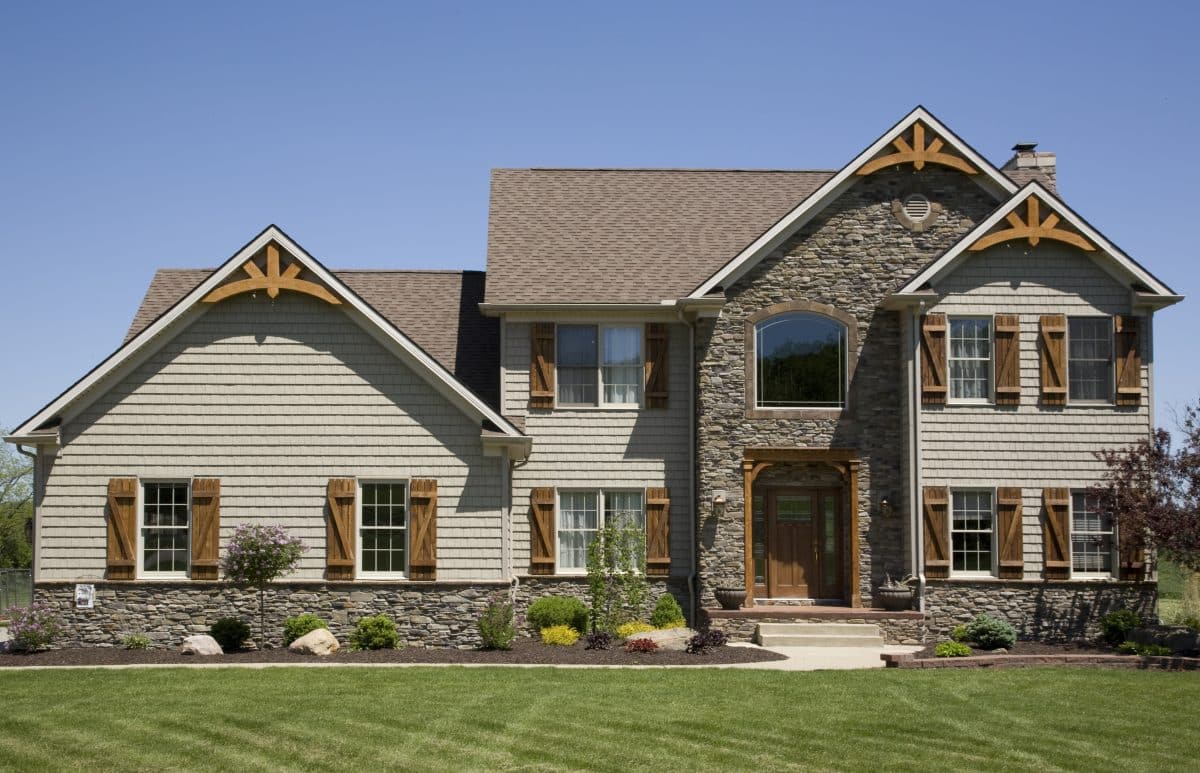
One of the biggest benefits of manufactured stone veneer is the sheer number of styles, profiles, and colors. With seemingly endless options replicating what’s found in nature, there’s a look for every home and every taste. However, this can make the selection process a little overwhelming. So how do you go about choosing a manufactured stone veneer?
Consider these questions as you narrow the choices.
What Is the Style of the Home?
Like any cladding material, it’s important to choose a stone profile that meshes well with the exterior house style. For example, profiles with a more linear layout and clean edges, such as Ledgestone, are often ideal for transitional or contemporary homes. Fieldstone and brick profiles are well-suited to more traditional exterior styles. And irregular, rounded profiles, like River Rock, offer a perfect finish for country homes and cabins. (Learn more about common profile types here.) That said, there’s no one end-all-be-all solution—leverage manufacturers’ design tools to try different profiles on your home to see what works best.
What Is the Home’s Exterior Color Palette?
With a host of colors from earthy browns to dark grays, it’s easy to find a hue that suits the tone of your home. If the stone is being used as an accent, such as for a vertical bump-out or a half wall, consider the colors of the other cladding materials. Stone colors can complement the other siding in a slightly lighter or darker shade. In contrast, if the primary cladding is lighter in tone, a bolder stone choice could create a dramatic, eye-catching accent. Another consideration is the siding material’s undertone; if it has gray or red undertones, for example, the stone color could reflect that (or vice versa).
What Does the Rest of the Neighborhood Look Like?
Differentiating your home from others down the block is important—but standing out too much might create an eyesore. As you’re weighing colors and styles, consider how the finished façade will look alongside others in the community, especially if the homes are close together.
Where on the Home Will the Stone Be Used?
The application of manufactured stone may, though it doesn’t have to, play a role in the visual weight of the stone you choose. Larger stones and visually “heavier” profiles, such irregular looks like River Rock, may feel overwhelming to the eye across an expansive façade. Leveraging design programs can help you gauge the way the finished product will look all together versus a few samples.
What Is Your Taste?
Above all, it really does come down to your personal preference. If you like a particular look, go with your gut. Ultimately, it’s your home and should reflect what you love and enjoy. Unlike painting your house pink, there are few ways to go wrong with manufactured stone because it replicates what’s found in nature so it’s appealing across the board.
What Is Your Budget?
Like any building material, there are cost differences from brand to brand, depending on materials and other factors. Though there isn’t as much variation from company to company, it’s still something to think about if you’re on a tighter budget.
Where Are You Located?
Though manufactured stone veneer is widely available across the U.S., there may be some limitations on availability for all profiles and colors depending on location. Work with your local dealer or use manufacturers’ online dealer locators to determine what’s available before falling in love with one particular product.
Some manufactured stone manufacturers offer online design tools that allow you to experiment with different looks on an image of your home. Leverage those tools to try different colors and profiles in combination with other materials to see what works best for you.
Find an MSV Producer near you today. Learn how you can hire a contractor that holds a CMHA certificate in MSV installation here!
Photo courtesy: InStone